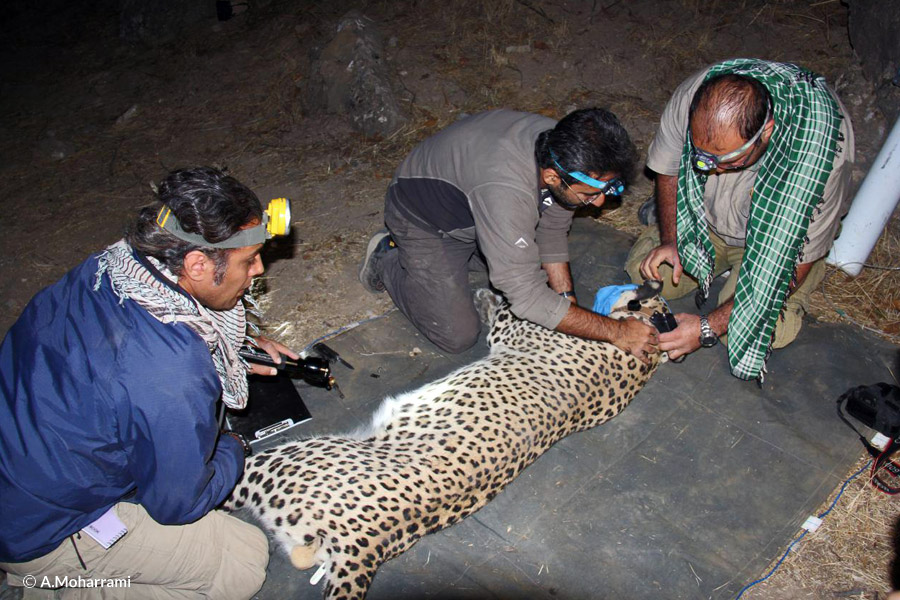Persian leopards share most of their range with humans – i.e. only around 25% of their current range lies within protected areas. Wandering in populated areas brings the leopards into direct encounters with humans, and intentional or accidental killing by people is a frequent cause of mortality, limiting leopard numbers. Therefore, developing suitable strategies to manage these conflicts outside protected areas has the potential to be a key factor in the future conservation of leopards.
“Collar4Conservation” is a novel initiative by Future4Leopards Foundation in which high-tech GPS satellite collars are fitted to the endangered Persian leopards of northeastern Iran so that we can track them and thereby afford them better protection. Leopards are safely captured using foot-snare traps, then immobilized for physical investigation and fitting of satellite collars with a timed drop-off unit, ideal for following their wide-ranging movements in mountainous environments. All field capture operations are implemented with the active involvement of a trained crew. The collars send 8 to 24 GPS points per day, and the two-way communication option on the collars enables scientists to reprogram them depending on the habitat or behaviour of the animal. For example, we program collars to transmit a leopard’s position at the shortest time interval setting available to make sure that the animals are safe.
Although a critical tool for our scientific research, the main benefit of the Collar4Conservation program is not so much the scientific information the collars provide as the way this information can be used to enhance our prime aim – conservation itself. There is no question that understanding the leopards’ movements and behaviour is crucial to developing effective protection for the populations of these big cats. Satellite collars are probably the most useful and reliable equipment we have for filling such a gap in our knowledge.
So far, collars have enabled us to track excursions made by individual animals outside reserve boundaries that may place them at greater risk. Building on this, we aim to evaluate the effectiveness of the reserve boundaries in protecting the leopards and, beyond these boundaries, to discover the routes or “corridors” they use at national and international scales. Without this invaluable information, the long-term survival of the leopard populations cannot be guaranteed.

2) To track excursions outside the park boundaries which may put individuals at greater risk;
3) To identify possible dispersal routes to “sink” areas around the park and their contribution to the persistence of subpopulations in habitat areas outside the park;
4) To evaluate the effectiveness of the park boundaries in protecting the leopards;
5) To understand the movements of leopards across the international border between Iran and Turkmenistan in central Asia.

